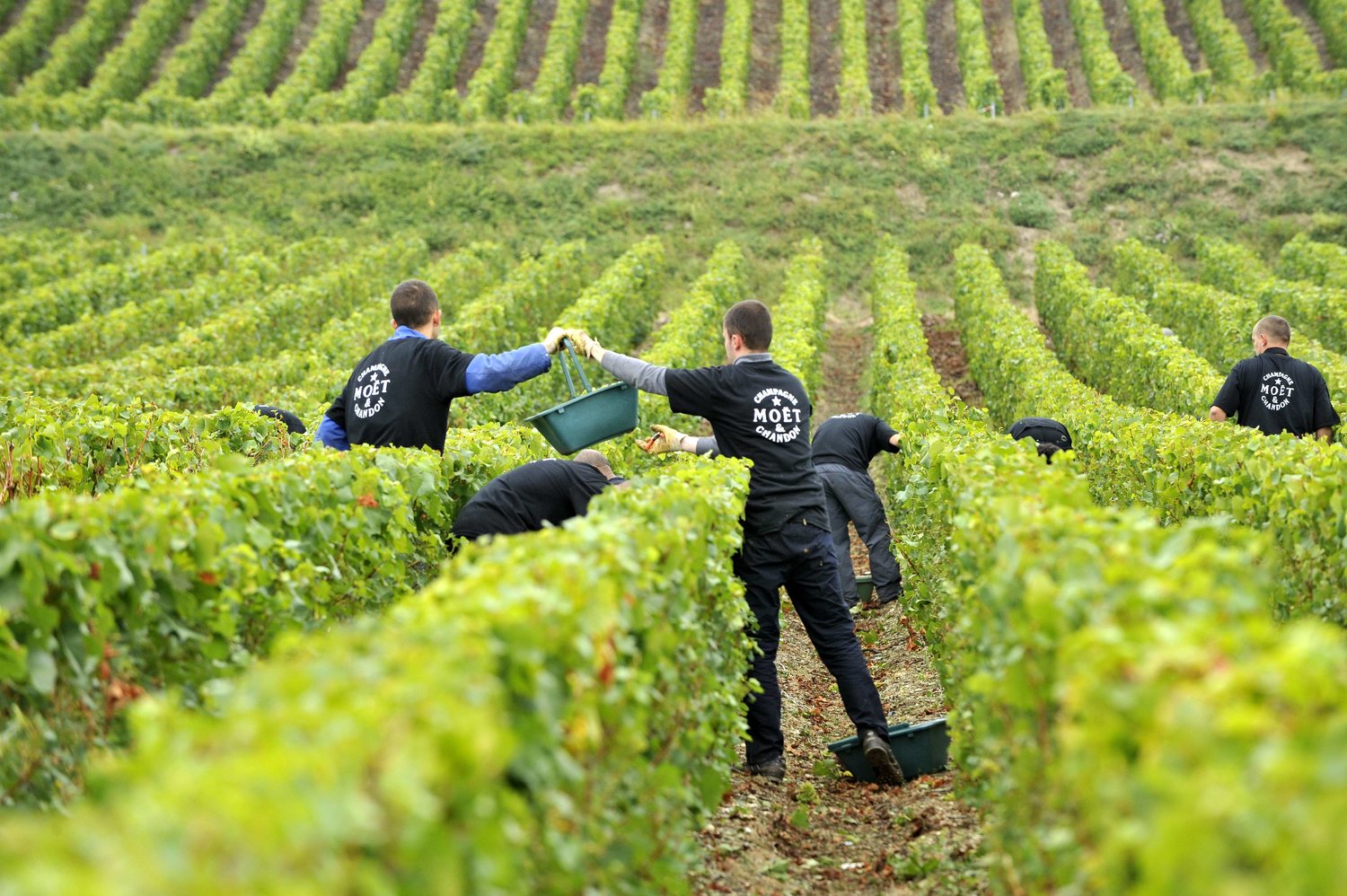It’s important to know where things come from. To understand a product’s origins, and how it arrives in our hands, is to place value in what we own. In our ongoing series, we highlight the people and processes that help bring to life some of today’s most revered items. Consider it a behind-the-scenes look at what it takes to create something truly exceptional. This issue: Moët & Chandon’s Imperial champagne
WRITTEN BY RYAN YUH
IMAGES COURTESY OF MOËT & CHANDON
There are few things in this world that are more synonymous with luxury, craft, and merriment than Moët & Chandon champagne. Enjoyed the world over, the bubbly libation has become a hallmark in the celebratory canon that includes everything from wedding nuptials to New Year festivities.
But while you have surely had the pleasure of enjoying a fine bottle, how often have you thought about how such a splendid liquid came to arrive in your glass?
Consider this, every single bottle of Moët & Chandon that has been enjoyed throughout history has all come from a single origin, each lovingly nurtured and destined to arrive in someone’s glass on a given occasion. Think of each bottle as an heirloom, one with an exquisite pedigree that has involved the passing down of knowledge from generations past.
And to think, it all starts with something as simple as the humble grape.
VINEYARDS




Great wines are born from excellent grapes, and when it comes to the conditions needed to make Moët & Chandon’s flagship Imperial champagne, no other place checks off the boxes quite like the picturesque vineyards of France’s Champagne region. The starting point for every bottle created, the area is unique in its characteristics: strong vines thrive as a result of the region’s oceanic and continental climates, sloping hills limit the impact of cold weather, and soil predominantly composed of chalk allows for efficient draining in times of abundant rain and effective absorption during drier summers.
In this region, a combination of chardonnay, pinot noir, and pinot meunier grapes are grown – the three varietals that make up each bottle of Imperial. Understanding the crucial role that grape quality plays, Moët & Chandon works closely with local vine-growers to find the best grapes from their own 1,200 hectares of vineyards combined with an additional 3,000 hectares from these owners, who provide the House with the first choice of grapes from each harvest in a trusted partnership that has existed for generations.
During this stage of the journey, two specific individuals play a crucial role in determining the overall success of each harvest. The Directeur du Vignoble (who oversees the care and protection of the vines) works closely with the Chef de Cave (a master at verifying optimum ripeness) in order to decide on the best time to harvest the grapes so as to achieve the flavours and standard that the brand has become known for.
ASSEMBLAGE
The wine must go through two stages of fermentation throughout the entire process. After the first stage, still wines are blended together within the first several months after harvesting by the Chef de Cave, who tastes and mixes the current year’s wines with reserve wines, in order to highlight the unique qualities of the given harvest. Consider him a chemist of sorts who blends these wines to create depth and complexity, and arrive at a more consistent champagne that aligns with the House’s signature quality. At this point, the wine is then bottled for the second fermentation, known throughout the process for the emergence of the champagne’s effervescence – it’s sparkle.
MATURATION




After the Chef de Cave has finished blending, the new wine is then transported to the House’s chalk cellars in Epernay, where it starts a beautiful journey that will see it evolve into the champagne encased within every bottle of Moët Imperial. The city’s main artery, Champagne Avenue, is colloquially known as the “richest avenue in the world” based on the fact that it shelters a labyrinth of about 110 kilometers of chalk cellars (of which Moët & Chandon occupies 28 kilometers of) underneath its cobbled stones. Combined, these chalk cellars hold approximately 200 million bottles of champagne – roughly 4 billion Euros’ (give or take) worth of bubbly!
Within these ancient cellars, the wine matures via a slow and gentle chemical reaction that takes place when yeast and sugar are added to the wine, creating carbon dioxide – the champagne’s signature bubbles. Legally, the minimum ageing process for a non-vintage champagne calls for at least 15 months, and three years for a vintage. Moët & Chandon invests considerably more time in order to bring out the very best in each bottle, with two to three years and seven years, respectively. In this time, the bubbles gradually become smaller and finer (an indicator of quality), and the wine begins to reveal the masterful assemblage talents of the Chef de Cave.
THE WINE OF WINES
Moët & Chandon’s Imperial was created as an homage to Emperor Napoleon Bonaparte’s friendship with Jean-Rémy Moët, the grandson of the House’s founder. Since then, Moët Imperial has gone on to become “the world’s most loved champagne”, with a bottle popped around the world every two seconds. The next time you find yourself in front of the good stuff, take a minute to savour the history and craft contained within your glass and enjoy the moment.
In the famous words of Napoleon, “Champagne! In victory one deserves it; in defeat one needs it.”
We’ll raise a glass to that.








